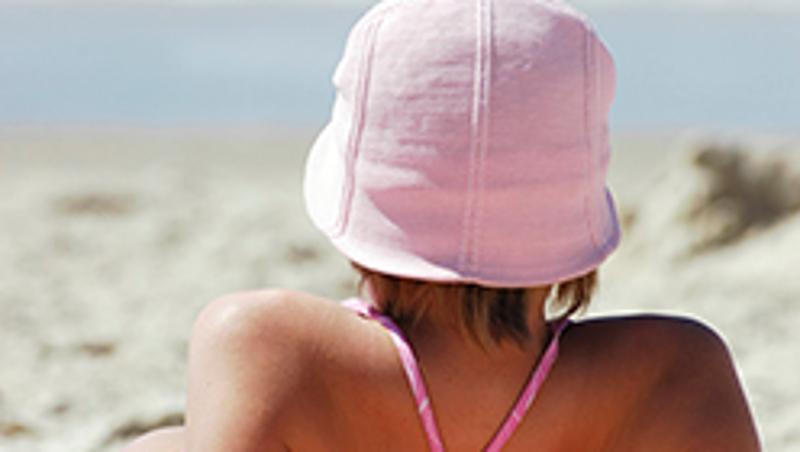
Wearable gadgets are the new wave of sun protection offering the potential to reduce skin cancer rates to those most at risk of sunburn, young people aged 18-35, according to QUT researchers.
Dr Elke Hacker, from QUT's Institute of Health and Biomedical Innovation (IHBI), is developing a design for a smart device application (app) that alerts wearers when ultra-violet radiation or sunlight exposure is high and sun protection required.
Watch Dr Hacker explain the importance of sun protection
"Wearable devices such as Fitbits, Google sunglasses and smart watches have the potential to help people avoid sunburn by notifying wearers when UV exposure is high in real-time," she said.
Dr Hacker said UV exposure was the main environmental risk factor for skin cancer and sunburn reflected a damaging dose of sunlight.
"What we know is that sunburn rates are high, especially among younger people, with more than 72 per cent of Queenslanders aged 18-24 admitting to getting sunburnt," she said.
"The sun smart messages are getting through to Queenslanders but the concern is that high rates of sunburn are caused because people are unaware when dangerous UV levels have been reached.
"This app will be designed to give real-time UV Index information that can help change unhealthy sun exposure habits."
Dr Hacker said the key to designing an effective app was to make sure it met the needs and wants of users.
"We are looking for young people 18 to 35 to take part in focus groups to be held at QUT's Kelvin Grove campus to discuss and share their views about design elements for a UV exposure app," she said.
"We want to know what type of app would be appealing to young people and how they want their UV information delivered.
"For example, would a tactile notification of high UV levels such as a vibration be effective?
"Do people want short messages that give direct information or would they prefer an app that is interactive, such as a game-like option where users create an avatar and the health of their avatar is affected by their UV exposure?
"Other options we have come up with are things like offering rewards for those people who use sun protection when UV levels are high. These rewards could potentially be offered through private health insurers who want to encourage healthy living choices."
Dr Hacker said young people were at high risk of sunburn and repeated sunburn was directly linked to increased rates of melanoma and other skin cancers.
"If we can help young people better protect themselves using devices they are familiar with, they find appealing with and are already using, we can make a real impact in reducing sunburn rates and incidence of skin cancer."
Focus groups will be held during in December. To take part in the study, email skntec@qut.edu.au
Media contact:
Sandra Hutchinson, QUT Media (Tue, Wed), 07 3138 9449 or media@qut.edu.au
After hours, Rose Trapnell, 0407 585 901




